- Administrator
- Albums and Singles

Out on May 26, 2014:
Soundway's second foray into South East Asia is focused on North-East Thailand, the epicenter of Molam and Luk Thung Isan music. Hypnotic phin & khaen riffs, pulsing, electrified country rhythms and heartfelt vocals punctuate another journey into the lesser known reaches of 1970s Thai music.
The first volume of The Sound of Siam, released in 2011, was the first introduction for many to the artistry and innovations of modern Thai music. One of the most popular compilations on Soundway Records the music even made it onto the big screen with "Mae Jom Ka Lon" by Dao Bandon featured on the soundtrack of The Hangover Part II. In an interview with LA Times, Mick Jagger spoke of discovering the collection that "some nutter put together" after hearing the riff from Jumpin' Jack Flash on one of the tracks from the compilation.
In this second volume of The Sound of Siam, the focus is firmly on the music the sounds of northeast Thailand, or Isan, and attempts to show how a genre evolved and developed from essentially an acoustic tradition with specific geographic roots, to one that started to incorporate other instruments and influences that reached out to the Isan diaspora around the country.
The term "molam" is actually two separate words pushed together: Mo meaning "expert" or "doctor" and lam meaning "to sing." Hence the literal translation means "singing expert." Many molam records have extended intros that allow a vocalist to establish the theme of the song, as well as flex their improvisational muscles.
Luk thung (literally "song of the countryside")is a much broader, rural style that had a bigger impact nationally. Artists like Saksiam Petchompu began fusing this style with molam, a move which propelled him to national fame. You can hear the influence of western funk, as well as Thai arrangements, on the luk thung Isan (as the hybrid became known) smash "Jeb Jin Jeb Jai" included here.
The Sound of Siam 2 - Molam & Luk Thung Isan from North-East Thailand 1970 - 1979 features 19 tracks, many appearing outside of Thailand for the first time. Both CD and double LP & is accompanied with detailed liner notes written by compilers Chris Menist and Maft Sai.
More information can be found here.
Read More
- Administrator
- Albums and Singles
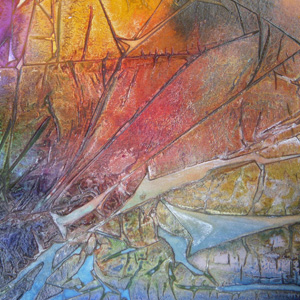 A little more than 20 years ago, in the fall of 1993, Windy Weber and Carl Hultgren started the Blue Flea label together in order to release their first record. Pressed to black wax, or purple if you were very lucky, the Watersong/Dragonfly 7" was presented in a simple green sleeve with a picture of a tree on one side and, on the other, the image of three broad maple leaves. Last year, for Record Store Day 2013, Windy and Carl inaugurated their 20th anniversary celebrations with the release of a cassette documenting their 2009 performance at the Solar Culture Gallery in Tucson, Arizona, a single night on what they claim was their last ever tour. Then, in December, they reunited with Dominic Martin, who put out the Emerald 7" on Enraptured in 1995, and released the Calliope/Carnivale single. The cassette caught Windy and Carl somewhere between We Will Always Be and Songs for the Broken Hearted mode, but the 45 was a glance over their shoulders, with a surprise percussion-injected twist tucked away on the B-side. Pressed to red vinyl (the orange vinyl edition sold out in a flash) and adorned in bright, hand painted sleeves that resemble fossilized leaves, I Walked Alone/At Night concludes the celebratory trilogy with a pair of reflective beauties, cool and crystalline from a distance, but red hot at their core. It is a fiery return to that green-sleeved single from 1993, reinforced and refreshed by Windy’s new-found inspiration, Carl’s seemingly effortless playing, and 20 years of hard work.
A little more than 20 years ago, in the fall of 1993, Windy Weber and Carl Hultgren started the Blue Flea label together in order to release their first record. Pressed to black wax, or purple if you were very lucky, the Watersong/Dragonfly 7" was presented in a simple green sleeve with a picture of a tree on one side and, on the other, the image of three broad maple leaves. Last year, for Record Store Day 2013, Windy and Carl inaugurated their 20th anniversary celebrations with the release of a cassette documenting their 2009 performance at the Solar Culture Gallery in Tucson, Arizona, a single night on what they claim was their last ever tour. Then, in December, they reunited with Dominic Martin, who put out the Emerald 7" on Enraptured in 1995, and released the Calliope/Carnivale single. The cassette caught Windy and Carl somewhere between We Will Always Be and Songs for the Broken Hearted mode, but the 45 was a glance over their shoulders, with a surprise percussion-injected twist tucked away on the B-side. Pressed to red vinyl (the orange vinyl edition sold out in a flash) and adorned in bright, hand painted sleeves that resemble fossilized leaves, I Walked Alone/At Night concludes the celebratory trilogy with a pair of reflective beauties, cool and crystalline from a distance, but red hot at their core. It is a fiery return to that green-sleeved single from 1993, reinforced and refreshed by Windy’s new-found inspiration, Carl’s seemingly effortless playing, and 20 years of hard work.
Windy and Carl’s last two full-length albums saw them become an entirely new band. They’d never been as rock ‘n’ roll as the space-rock label suggested, but in the seven years between 2001’s Consciousness and 2008’s Songs for the Broken Hearted they had left the earthy orbit of their more song-based material behind entirely. By 2012’s We Will Always Be, they had tumbled through empty space and sailed straight into the sun, where Windy’s vocals turned to liquid heat and Carl’s weighty drones became streams of white hot light. The songs melted away, the bodies burned away, and all that was left was their sound: Windy and Carl. Think of it as one name, without the conjunction or the spaces.
The Solar Culture Gallery cassette, recorded in 2009, was a snapshot of what that transformation had looked like on the road, and an indication of how Songs for the Broken Hearted had become We Will Always Be, both musically and privately. Calliope/Carnivale, which came eight months later, looked like a "from the vault" release too, until you got to the B-side. On "Calliope," Windy sang wordlessly over Carl’s strummed guitars. They laid a droning bit in there, probably drawn from an E-bow, but the melody was carried on the low strings, undistorted and completely discrete. It could have been a Drawing of Sound B-side, or a sketch from the same sessions, had it turned up on the Introspection set. It was ethereal, but nothing like their later, more abstract work.
On the other hand, there wasn’t a single guitar on "Carnivale," at least not for a solid two and half minutes. It was all tambourine and bells, or xylophone, and Windy sang clear as day over the top, without anything there to obscure her words. Happily, on the other side of We Will Always Be, things sounded light-hearted and experimental.
"I Walked Alone" keeps that playful feeling up, but dresses it in murkier, more meditative attire. Windy’s vocals are front and center again, but they move in and out of the music more fluidly, some phrases disappearing into the haze of Carl’s circular melodies, others cresting just long enough to hear her sing lines like "time waits for no one" and "so begins the march toward becoming dust." The sound is melancholy, but not despairing, with the low strings again pushing the song forward and giving it a hopeful, yearning inflection.
The rest of Carl’s string work is a play of light and dark. His guitars shift and rock against each other, emanating bright clouds of melody and obscure, misty tone clusters. It recalls "Watersong’s" echo-drenched sound, but with twice the deliberation. Carl’s arrangements are tighter and more intricately woven, building tension and releasing it one hypnotic wave at a time.
Refracted chords and sharp angles dance all over "At Night," and Windy meets them with deep, almost chanted poetry. The particulars are hard to catch, but one line is certain: "I never knew what it meant to hear your voice at night." Carl’s playing rotates around those words like a mass of glassy, twinkling ice so delicate it might shatter. It never does, though. The whirl of words and flickering lights continues trance-like until it comes to a calm, glowing conclusion. The guitars might sound fragile, but the words and the mood are warm; they shine through the dusky atmosphere of the song the way embers shine through ash.
As much as these songs recall Windy and Carl’s beginnings, they point in a new direction too. Carl has a solo record on the way and his choices indicate what he might be up to in the near future. It also suggests that Windy and Carl have a lot more to say as a duo. When you come to a fork in the road and things seem uncertain, looking backwards can sometimes be the best way to move forwards.
samples:
- You can listen to both songs on Windy & Carl's Bandcamp page.
 
Read More
- Administrator
- Albums and Singles
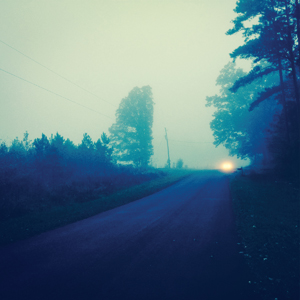 The pairing of Jenks Miller (Horseback) and James Toth (Wooden Wand) makes perfect sense, given both of them work with their own idiosyncratic approaches to southern Americana, resulting in music that is at times familiar and simultaneously unique. On this split release, each artist submitted three songs that are not only some of their most accessible material, but also complement each other wonderfully.
The pairing of Jenks Miller (Horseback) and James Toth (Wooden Wand) makes perfect sense, given both of them work with their own idiosyncratic approaches to southern Americana, resulting in music that is at times familiar and simultaneously unique. On this split release, each artist submitted three songs that are not only some of their most accessible material, but also complement each other wonderfully.
The three songs from Miller unsurprisingly sound like a hybrid of his recent Spirit Signal album and the newest Horseback release."Imperishable Sacred Land" leans a bit more towards his recent solo work, with its lead twanging guitar.A short piece, and even despite the droning organ that slowly slinks its way in, it has a sunnier, less sinister vibe compared to most of his work.
"Have Mercy" works as more of a hybrid piece, with its loose, living drumming and church-like organ giving an almost gospel-pop undercurrent to Miller’s guitar and processed vocals.Due to its overall simplicity and lo-fi sound, it results in a catchy, very natural sounding piece of music."Hats Off to (Roy) Montgomery" leans more into his recent Horseback sound, with haunting, shimmering layers of guitar atop one another.As feedback and dissonant passages slip in, the guitar tone drops down, everything gets darker and simultaneously more captivating.
Toth's side sticks even more to convention, and casually drifts between acoustic folk and country twang."The Sun Shines Brightly on the Road to Ruin" sticks more in the folksy realm, with simple guitar and vocal melodies over a bed of droning shruti box.With its slow pace and sparse structure, there is a dour, yet simultaneously uplifting vibe to it.
The remaining two songs stick a bit more in the realm of country influenced sound, both stripped down and sparse in comparison to "The Sun Shines.""Quicksand Rose" maintains a sad, but not necessarily depressive mood with its slow pace."Remember Me to Stone" has a modernized old country vibe to it, with references to "deleting numbers of dead friends".Here there is more of an emphasis on the vocals in the mix, plus additional backing vocals from Leah Toth to flesh it all out.
Similar in imagery and mood, but equally difficult to classify, Jenks Miller and James Toth are paired perfectly on Roads to Ruin.Compared to their respective discographies, these six songs might not make for their most difficult or challenging works, but are more song oriented and therefore memorable in their occult backwoods country folk ambience.
samples:
 
Read More
- Administrator
- Albums and Singles
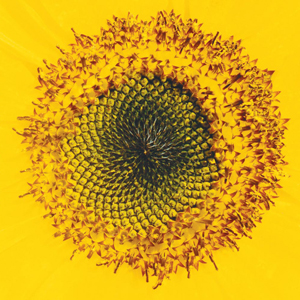 As a former member of Skullflower and Ascension, Jaworzyn was one of the elite guitar manglers of the '90s noise rock UK scene before seemingly disappearing form the earth. Last year, along with a series of Skullflower reissues, Jaworzyn reappeared with a few singles embracing electronic instrumentation, while still pursuing that world of noise and entropy he did via six strings. Principles of Inertia is another manifestation of this electronic infatuation, with a joyful disregard for genre traditions or conventions.
As a former member of Skullflower and Ascension, Jaworzyn was one of the elite guitar manglers of the '90s noise rock UK scene before seemingly disappearing form the earth. Last year, along with a series of Skullflower reissues, Jaworzyn reappeared with a few singles embracing electronic instrumentation, while still pursuing that world of noise and entropy he did via six strings. Principles of Inertia is another manifestation of this electronic infatuation, with a joyful disregard for genre traditions or conventions.
The two pieces that open and close the album are the ones that flirt most with conventional electronic sounds, although in such a way that ignores expectations as far as structure and rhythm goes."Biorigged" is all nearly random synth beeps and noises, collaged together in something that vaguely resembles a rhythm, but too chaotic to settle in comfortably.A steady, distorted beat underpins everything, and while the changes are slight, there is a lot of variation throughout while keeping the same cyclic rhythm.
That schizoid version of techno appears again on the closing "Apocalypse," all erratic and jerky beats over machine gun like synth sequences.Again, it has an intentionally repetitive quality, but the ghostly synth backing that lurks in the distance makes for a more unsettling feel.Stuttering drum machines are also prevalent on "Festival of Lies," but positioned atop a crackling static backing and dissonant electronics, it almost has a harsh noise quality to it as opposed to a danceable one.
"Gland Collector" is also heavy steeped in rhythm, but again erratic, and with its spiky FM synth sound giving it a dirty edge.It does admittedly stay a bit too repetitive, however, with the changes being too miniscule.The digital only "Dawn of a New Ice Age" is the least focused on rhythm, and instead emphasizes sweeping, vaguely progressive rock synth pads.Like "Gland Collector," the electronics have that same raw, harsh FM digital sheen to them that put the piece on just the right side of noisy.
I was always a fan of Jaworzyn’s guitar noise based endeavors, and that feeling carries over into his newer electronic excursions.When I first went into this album expecting something more akin to conventional techno or electronic music, I was a bit disappointed at the randomness and overly repetitive rhythms.After sitting with the album for a bit, I started to look at it more objectively without any specific expectations, and that is when the strengths became evident.I would still love to hear some throwback guitar noise from him, but works like Principles of Inertia will definitely keep me listening to his work.
samples:
 
Read More
- Administrator
- Albums and Singles
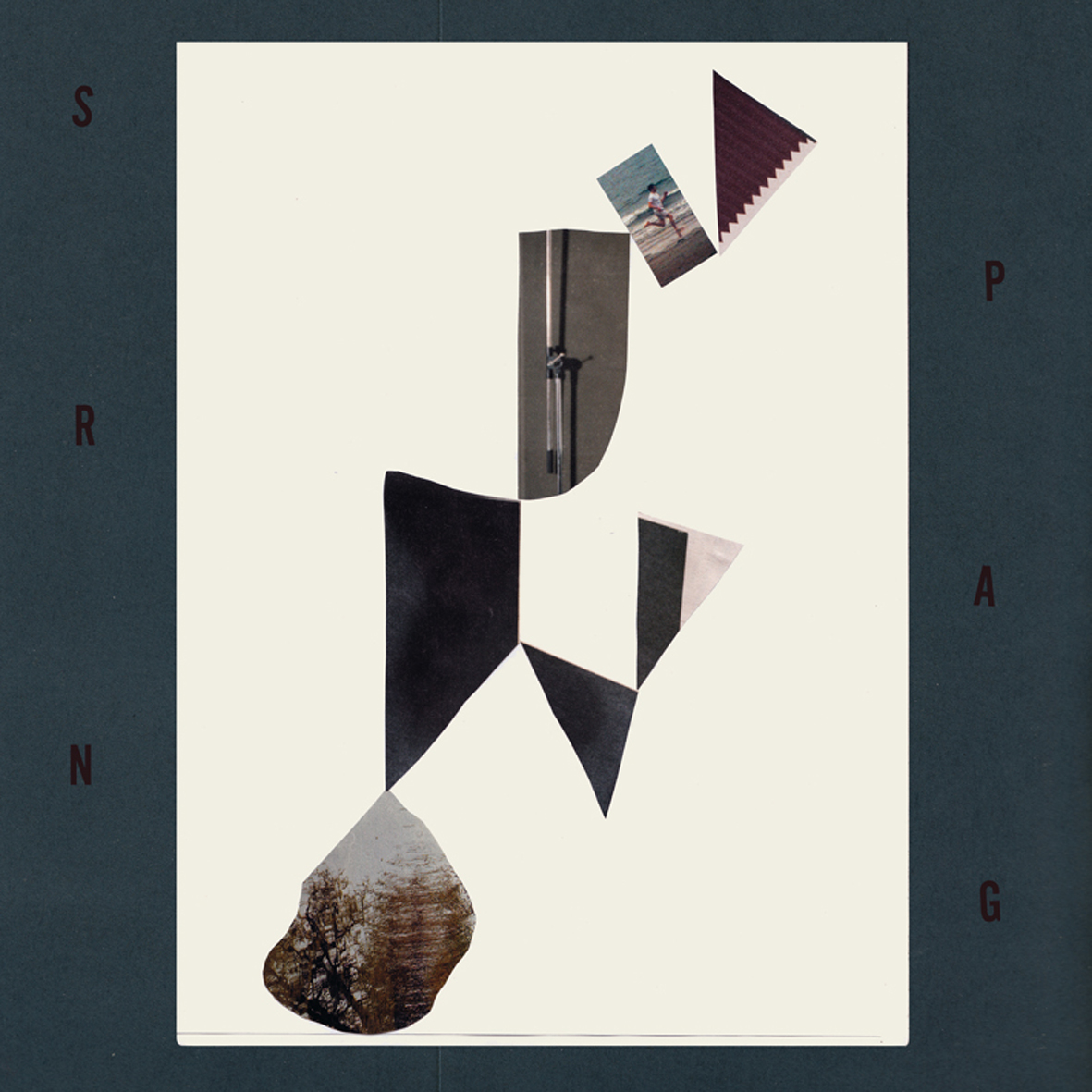 This is Thielemans' first full-length for Miasmah as a solo artist, but he has previously turned up on the label as a guest on Kreng's debut album, which provides a fairly accurate window into the milieu from which he is coming: the darker, weirder fringes of Belgium's theater/improv/art scene. Unlike his fellow shadowy avant-garde eccentrics, however, Eric is primarily a drummer and Sprang is composed almost entirely of unusual percussion experiments. Needless to say, that is some rather niche territory to occupy in an already very niche scene, but this is quite a remarkably fascinating album for a one-man tour de force of skittering, plinking percussion.
This is Thielemans' first full-length for Miasmah as a solo artist, but he has previously turned up on the label as a guest on Kreng's debut album, which provides a fairly accurate window into the milieu from which he is coming: the darker, weirder fringes of Belgium's theater/improv/art scene. Unlike his fellow shadowy avant-garde eccentrics, however, Eric is primarily a drummer and Sprang is composed almost entirely of unusual percussion experiments. Needless to say, that is some rather niche territory to occupy in an already very niche scene, but this is quite a remarkably fascinating album for a one-man tour de force of skittering, plinking percussion.
Despite Eric's long history as a drummer (a jazz drummer even), it is quite difficult to find much on Sprang that sounds like it came from an actual drum kit.A few pieces, such as onomatopoetically titled "Sprrrrrrr," admittedly feature some subtle mallet- or brush-driven drum rhythms, but such touches are rarely (if ever) the focus.Rather, the bulk of Sprang sounds like the work of a whimsically deranged inventor who has created an arsenal of clattering, plinking, plonking, and rattling wind-up mechanical devices, which is certainly a hell of a lot cooler than a 40-minute drum solo would have been.The overall feel is definitely an understated, small-scale, fragile, and cinematic one, like something that might be playing during a Quay Brothers film.That rickety, dreamlike illusion is further enhanced by a number of small touches throughout the album, particularly on "Garden," which features a bittersweet whistled melody and a stumbling, disjointed glockenspiel motif.
While almost the entire album maintains a deliciously forlorn "wounded toy" aesthetic, the individual pieces cover an impressive amount of stylistic ground.  "Tptptptp," for example, sounds like a crazily virtuosic drum solo performed entirely with spoons and things lying around a kitchen, while "Kkkkrrrrr" sounds like someone playing an empty oil drum with a violin bow inside the violently creaking hull of a sinking ship.  And then there is "River," which resembles nothing less than a room full of malfunctioning, out-of-control antique clocks.
Conversely, the lengthiest (and perhaps best) piece on Sprang almost sounds conventionally musical, as "Post Soldiers' Hymn" combines an oddly lurching, stumbling beat with a humming, quavering drone.  In fact, there are even chord changes at one point, though Thielemans mostly uses his glockenspiel to create a hanging, oscillating haze of overtones.  Despite being the most "straight" piece on the album, it perversely manages to highlight just how ingenious Eric is, as even his concessions to things like beats and melodies manage to sound quite broken and unique.  I suppose drifting within shouting distance of normalcy probably provided me with the necessary context for appreciating the full aberrance and otherworldliness of Thielemans’ vision, which I ultimately appreciated immensely.  I guess that makes Sprang a minor masterpiece of sorts and an inspiring one at that, as it feels like a secret and surreal handmade thing that seems totally detached from the time and place that birthed it.
Samples:
 
Read More
- Administrator
- Albums and Singles
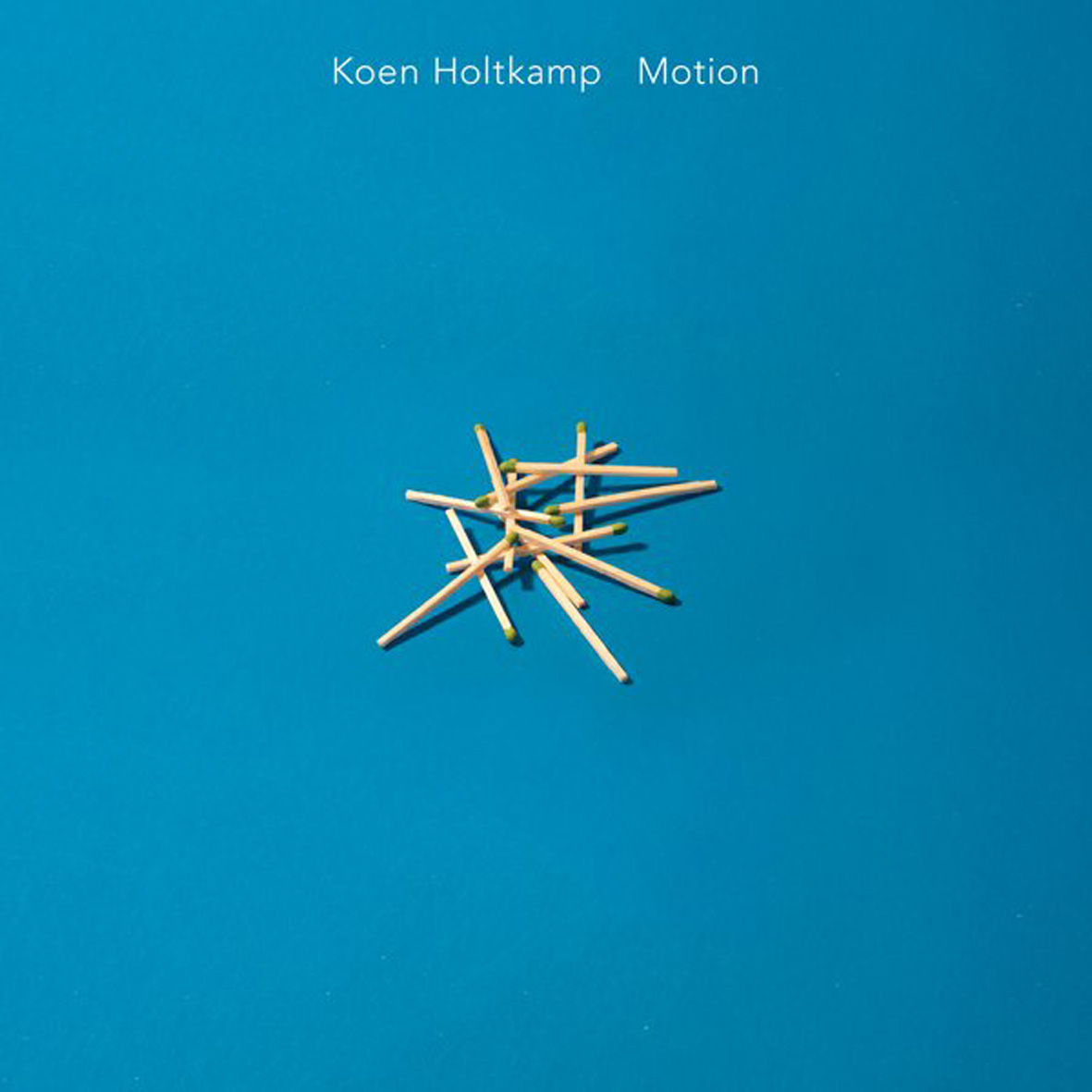 My general lack of excitement about current glut of synthesizer albums is well-documented, but there are a handful of artists that I still look forward to and Koen Holtkamp is one of them. On this, his first solo album for Thrill Jockey, he delivers yet another fine set of vibrantly burbling analog sounds. While I do not necessarily love every single song on Motion, it certainly contains some of his best work and reaffirms my belief that Koen is in a class of his own when it comes to constructing dynamic, multi-layered synth opuses.
My general lack of excitement about current glut of synthesizer albums is well-documented, but there are a handful of artists that I still look forward to and Koen Holtkamp is one of them. On this, his first solo album for Thrill Jockey, he delivers yet another fine set of vibrantly burbling analog sounds. While I do not necessarily love every single song on Motion, it certainly contains some of his best work and reaffirms my belief that Koen is in a class of his own when it comes to constructing dynamic, multi-layered synth opuses.
This album is a bit of a compositional divergence for Holtkamp, as the first three of these four songs were all composed and recorded in the studio.  While that is generally a very normal way to create an album for many, it is not for Koen, as most of his previous solo work has evolved from his live performances.  Initially, that seemed like a dubious move to me, as one of my favorite parts of Holtkamp's aesthetic has always been the way that his songs can gradually blossom from unpromising beginnings into something quite mesmerizing once all of the accumulating loops are finally in place.  Thankfully, that magic remains mostly intact–the only real change is that the pieces maybe develop a bit faster than they did previously, though they still all feel somewhat epic in scope.  Yet another of Motion's innovations is that working primarily in the studio inspired Koen to augment a few pieces with non-synth textures, most prominently with the distorted electric guitar melody in "Vert."
Astonishingly, I like electric guitars even less than vintage synthesizer textures (I am very picky), so "Vert" is my least favorite song on the album, though it is not bad by any means.  Koen's other instrumental divergence, "Crotales," is much more to my liking, augmenting its burbling, shimmering arpeggios with warm (virtual) stand-up bass and gently twinkling crotales.  The best pieces, however, are the synth-only bookends, "Between Visible Things" and the legitimately epic "Endlessness," which was not composed in the studio.
"Between Visible Things" begins with bright, gently phasing arpeggios over a slowly descending chord progression augmented by sustained electric guitar.  Gradually, however, Koen starts spiraling some sounds out of his previously rigid pattern and a melancholy bass burble appears to pull the cheeriness into darker and more emotionally resonant waters.  Once that happens, the piece is essentially firing on all cylinders and Koen expertly keeps the proceedings compelling by artfully adding and removing layers.  The 21-minute "Endlessness," on the other hand, captures Holtkamp at his long-form, snowballing zenith, evolving from swaying minimal drone into a complexly multi-layered crescendo with a very cool swooping melody.  While it is by far the best piece on Motion, "Endlessness" is basically a reprise of all of the same themes that fill the rest of the album–the sole key difference is that it is just much longer and more slow-burning.
As far as straight-up synthesizer albums go, this is definitely one of the best ones that I have heard in the last few years, but "Endlessness" (which takes up literally half of the album) is actually wonderful enough to make me forget that I am listening to a synth album altogether: sure, the textures still sound like synthesizers, but they feel like a mere tool used to create something of hypnotic, evolving beauty rather than the main attraction.  Though I suppose there is some irony in the fact that the best piece on this album is the sole piece that stuck to Koen's previous methods, the end result is quite possibly the best album of his career, so he is probably nearing the peak of his powers no matter how he chooses to work.
 
Read More
- Administrator
- Albums and Singles
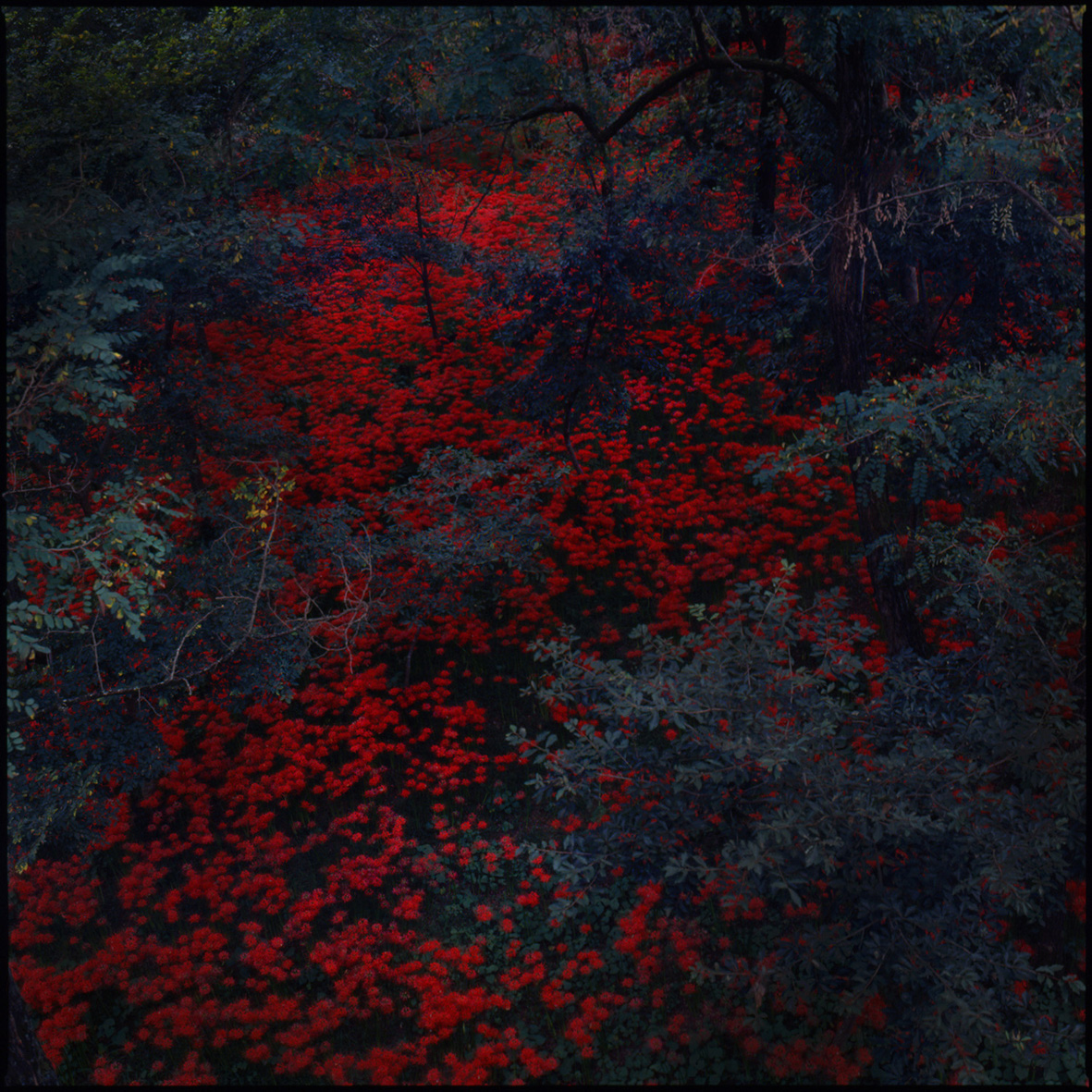
Students of Decay label head Alex Cobb is back with two new albums: his latest ambient drone opus under his own name and a compilation of some of Taiga Remains’ limited-edition cassette releases from 2008. They feel oddly like companion pieces—though at least six years separate the two albums—as it seems like Cobb was always reaching for the same minimal, warm, and blurred aesthetic.  He just used different means to get there at different points in his career.  In any case, both albums are quite likable: while Marigold and Cable handily eclipses Works in both execution and composition, the Taiga album nicely offsets some of Cobb’s serene tendencies with a healthy dose of tape noise, which offers a charm all its own.
Although it does not sound like it, Marigold and Cable was recorded without the use of loops or synthesizers–just "live" processed guitar.  Normally, such feats do not impress me all that much, as how the album ultimately sounds is much more important than the difficulty or purity of the process involved in getting there.  In this case, however, I was genuinely taken aback by how lush and oceanic the opening "Famosa" sounded.  Lamentably, it lasts less than four minutes, however, and is followed by a less immediately striking piece ("Rain at the Fete") that is almost four times as long.  "Rain" is not without its appeal though, despite being less engulfing.  In fact, it is actually quite a bit more ambitious than its processor, sounding like a deliberate composition rather than just a waxing and waning swell of shimmering guitar noise.  Stars of the Lid is probably the obvious reference point for the pastoral drift of "Rain," but Cobb admirably puts a bit of his own spin on that aesthetic by beautifully blurring and smearing his notes.
As good as that sounds, Cobb errs on being a bit too tranquil and understated for my taste, so I prefer Marigold’s somewhat more varied second half.  On "Oversong," for example, Cobb is joined by Root Strata's Maxwell Croy on koto, which proves to be an excellent pairing.  Cobb's guitar shimmer recalls a more restrained version of "Famosa," but the harsher metallic texture of Croy's koto is the perfect foil for Alex’s sea of ambient bliss.  Also, there are some very nice oscillating overtone harmonies drifting about as well, making for an absolutely wonderful piece from start to finish.  Contrast and artfully buried tension always make good ambient drone even better.  The album closes with another lengthy piece ("Marine Layer") that revisits the bleary, long-form drift of "Rain," but much more satisfyingly, as its more pastoral tendencies are balanced out by a subtly dissonant haze of overtones and a bit of unpredictable-sounding feedback.
While I only truly liked three of the four pieces, that is quite an impressive success rate for an ambient drone album (for me, anyway).  I have no idea how to rank this within Cobb’s oeuvre, however, as I preferred the harsher textures of 2012’s Passage to Morning and have not heard much of his Taiga Remains back catalog.  That said, Alex definitely seems to be making impressive leaps as a composer with each new album, even as he veers away from my subjective comfort zone into calmer waters.  While I am tempted to grumble at length about how there should have been way more koto, I will instead concede that Marigold and Cable is ultimately a strong effort that should sate the appetite of anybody nostalgic for the golden age of Kranky drone, which is certainly a void that could use some filling.
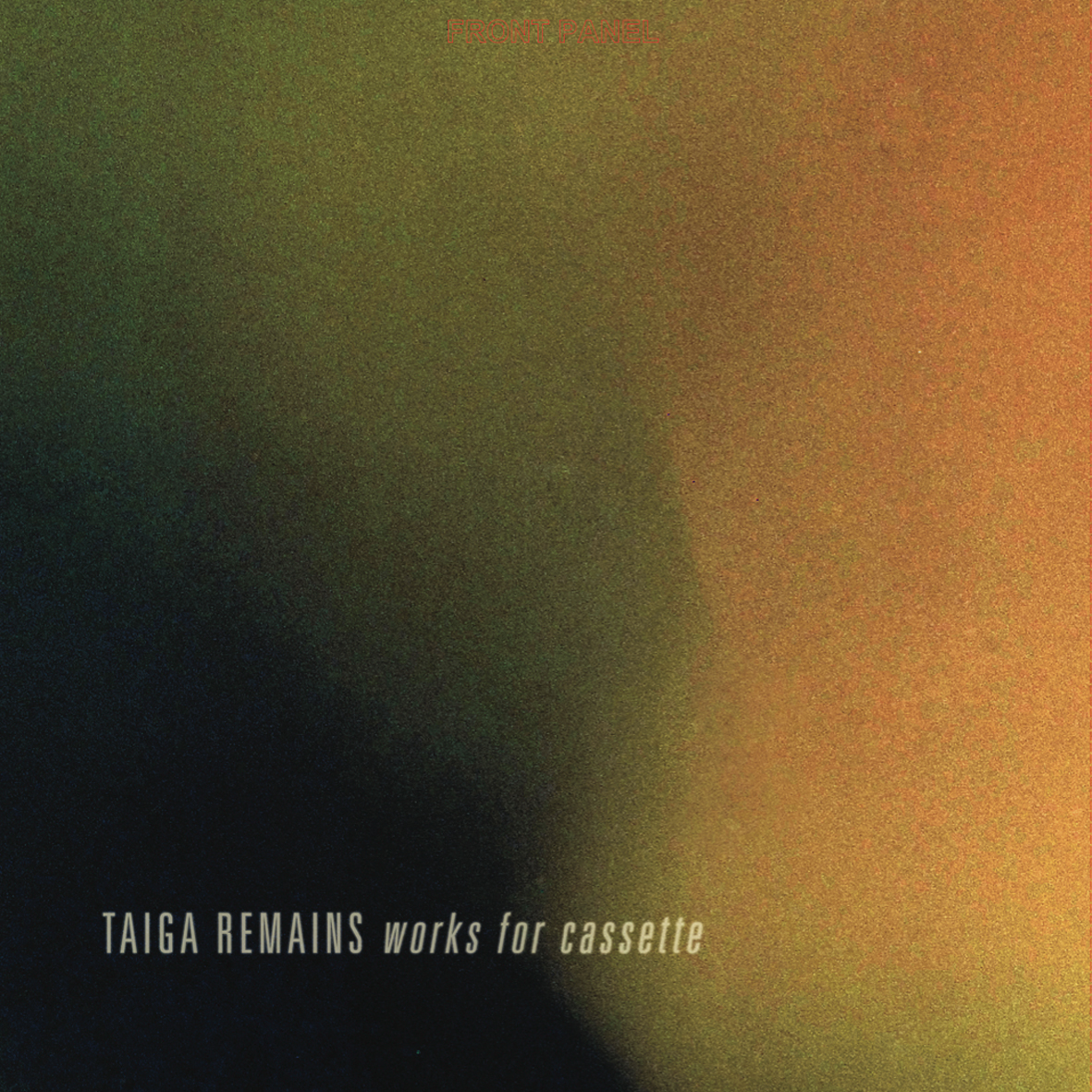
Works for Cassette is culled from two separate releases, Beneath the Weeping Beeches (Ekhein) and Thereafter (Arbor), and is immediately differentiated from Marigold by the fact that Alex's guitar actually sounds like a guitar in the opening "Sup Pralad."  Despite that, he seems to have used the cassette medium to achieve a similar end, replacing willful blurring of sounds with tape hiss and the smearing effect of low-fidelity cassette recording.  The mood is quite a bit different though, as pieces like "There's Nothing" undercut Cobb’s drifting swells with quite a bit of rawness and trebly edge.  A significant change occurs with the lengthy third song, however, which is surprising, as it comes from the same tape as the previous pieces.  While "Skin, Leaves" still sounds quite lo-fi and smeared, it seems to work much better, as the gently oscillating cassette murk is perfectly suited for its glacially drifting melancholy.  It is a great piece, though its execution sounds quite primitive when compared to Cobb's current work.  A strong motif is a strong motif.
The final two pieces come from Thereafter and sound more refined than those from Beeches and quite a bit more like Cobb's more serene work under his own name.  Not entirely though, as there is still quite a bit of tape distortion to give Alex's warm swells of processed guitar a bit of harshness and unpredictability, particularly with the feedback that surges up into the higher registers.  All the now-familiar Cobb characteristics are otherwise quite firmly in place, however, as both "Winter Tai-Tung" and "Spring Shan-Lin-Shi" unfold in gently hallucinatory slow-motion and accrue complicated clouds of overtone harmonies as they progress.  The warmer, more open "Spring" is especially good, though I think "Skin, Leaves" probably still steals the show.
While I definitely enjoyed it, my feelings about Works for Cassette are somewhat ambiguous and conflicted.  On the one hand, Alex has evolved beyond this early material in a significant way, so it seems perplexing that anyone else would want to look backwards when there are better, more recent albums to enjoy.  On the other hand, these pieces are still good enough to make me feel like kind of a chump for missing out on them when they originally came out–I would have liked these tapes a lot in 2008 (and Beeches even had artwork by Solange from Natural Snow Buildings).  Also, it seems like a waste for only like 75 or 100 people to get to hear those tapes, so their reissue seems entirely warranted.  I guess the people who want to experience the more shadowy corners of Cobb's discography will now get their chance and can expect to be appropriately delighted, but Works is probably one for the fans only.
 
 
 
Read More
- Administrator
- Albums and Singles
Hey.
Denovali Swingfest London 2014 starts on April 18th. We've just compiled a free download sampler for this year's event. 15 tracks of the 11 artists performing at the festival. Their sets will as always be as long as a proper club show (around an hour).
More information on both the event and the sampler can be found here.

Tracklist:
01. PIANO INTERRUPTED - Emoticon
from The Unified Field (Denovali Records)
02. ULRICH SCHNAUSS - A Ritual in Time and Death
from A Long Way To Fall (Scripted Realities / Domino)
03. HIDDEN ORCHESTRA - Dust
from Night Walks (Tru Thoughts / Denovali Records)
04. ANNA VON HAUSSWOLFF - Mountains Crave
05. ANNA VON HAUSSWOLFF - Epitaph of Theodor
from Ceremony (City Slang / Kning Disk / Other Music Recording Co.)
06. ORIGAMIBIRO - Odham's Standard
from Odham's Standard (Denovali Records)
07. THE HAXAN CLOAK - Dieu
from Excavation (Tri Angle)
08. PORTER RICKS - Nautical Dub
from Biokinetics (Type)
09. WITXES - Through Abraxas III
from A Fabric of Beliefs (Denovali Records)
10. PETRELS - Giulio's Throat
11. PETRELS - Canute
from Onkalo & Haeligewielle (Denovali Records)
12. ORIGAMIBIRO - Ada Deane
from Odham's Standard (Denovali Records)
13. PIANO INTERRUPTED - Cross Hands
from The Unified Field (Denovali Records)
14. JOHN LEMKE - Ivory Nights
from People Do (Denovali Records)
15. THOMAS KÖNER - Nuuk (Air)
from Nuuk (Mille Plateux)
Read More
- Administrator
- Albums and Singles

Big Blood – Fight for Your Dinner Vol. I – CD-R/Cassette (coming Soon) DTTR 041
Recordings from 1986-2014, Songs from comps, old family recordings,
alternate versions, new and unreleased songs all under one roof.
Hand made and screen printed. (17 songs, 53 minutes)
More information can be found here.
Read More
- Administrator
- Albums and Singles

Form Themselves Into Streams
Fourth in the Archival Series of Richard Skelton’s work, Form Themselves Into Streams was originally conceived and recorded during 2007 and 2008, at the same time as his Marking Time album.
The album was revisited in late 2013, during which some new elements were added. Originally conceived as one long recording, there are now five distinct, yet connected, pieces.
1. Carr (06.32)
2. Burn (04.35)
3. The Black Water (07.18)
4. Burning (06.28)
5. The Black Dub (07.58)
Total Running Time : 33m 23s

Ridgelines (Volume One)
Recordings made for two hills: 'Black Combe' in Cumbria, UK, and 'Ceapaigh an Bhaile' (Anglicised as 'Cappanawalla') in County Clare, Ireland.
Ridgelines (Volume One) consolidates two previous releases, Black Combe (2011) and Ridgelines (2012). It adds three previously unreleased versions of "Cappanawalla."
1. Black Combe (26:11)
2. Cappanawalla (05:18)
3. Cappanawalla (05:49)
4. Cappanawalla (12:47)
5. Black Combe (15:40)
6. Cappanawalla (15:16)
Total Running Time : 1.3hrs

Dyad
Originally released as a limited edition 'bonus disc' on the 9th of February, 2010, to accompany the reissue of Crow Autumn on Tompkins Square Records.
First released as Dyad (SRL19) as part of the *Skura boxed collection, on the 2nd of February, 2011.
1. A Broken Consort - Severance (05:20)
2. Saddleback - Gerroa Thursday (Richard Skelton Version) (06:14)
3. Heidika - Limn (Original Version) (03:10)
4. The Shape Leaves (Early Version) (06:53)
5. Heidika - Limn (Reworked) (03:15)
6. Machinefabriek & Richard Skelton - Daas (07:42)
Total Running Time : 32m 34s
More information can be found here.
Read More
- Administrator
- Albums and Singles
Comprised of eight tracks in 30 min, Periscope Blues is the culmination of a mission gone wrong. Music for the stranded, the lost, those backed into a corner with nowhere to go, or maybe a reflection of sad individuals panicking on a tropical vacation gone awry.
Somber yet very tense drifting off radar machine electronics that feel like a blistering sun beating down on decaying beach remains as time crawls on. That or the equivalent to working the grill summers at Jones Beach and stealing from the register just to get a little more...
More information can be found here.

Read More